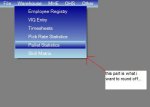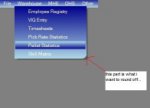Anti-Rich
Well-known member
hi all,
i have recently discovered how to use gradients in my application, and i am pretty happy with the results. at the moment i have a dark blue - light blue fade and it looks good
with my menu strip, i feel that the edges of the menu are too sharp, and detract from the 'shiny' or 'smooth' look of the application. so my question is, how can i round off the edges of the menu itself ..
i have attached a picture showing what i mean...
cheers all
adam
i have recently discovered how to use gradients in my application, and i am pretty happy with the results. at the moment i have a dark blue - light blue fade and it looks good
with my menu strip, i feel that the edges of the menu are too sharp, and detract from the 'shiny' or 'smooth' look of the application. so my question is, how can i round off the edges of the menu itself ..
i have attached a picture showing what i mean...
cheers all
adam


